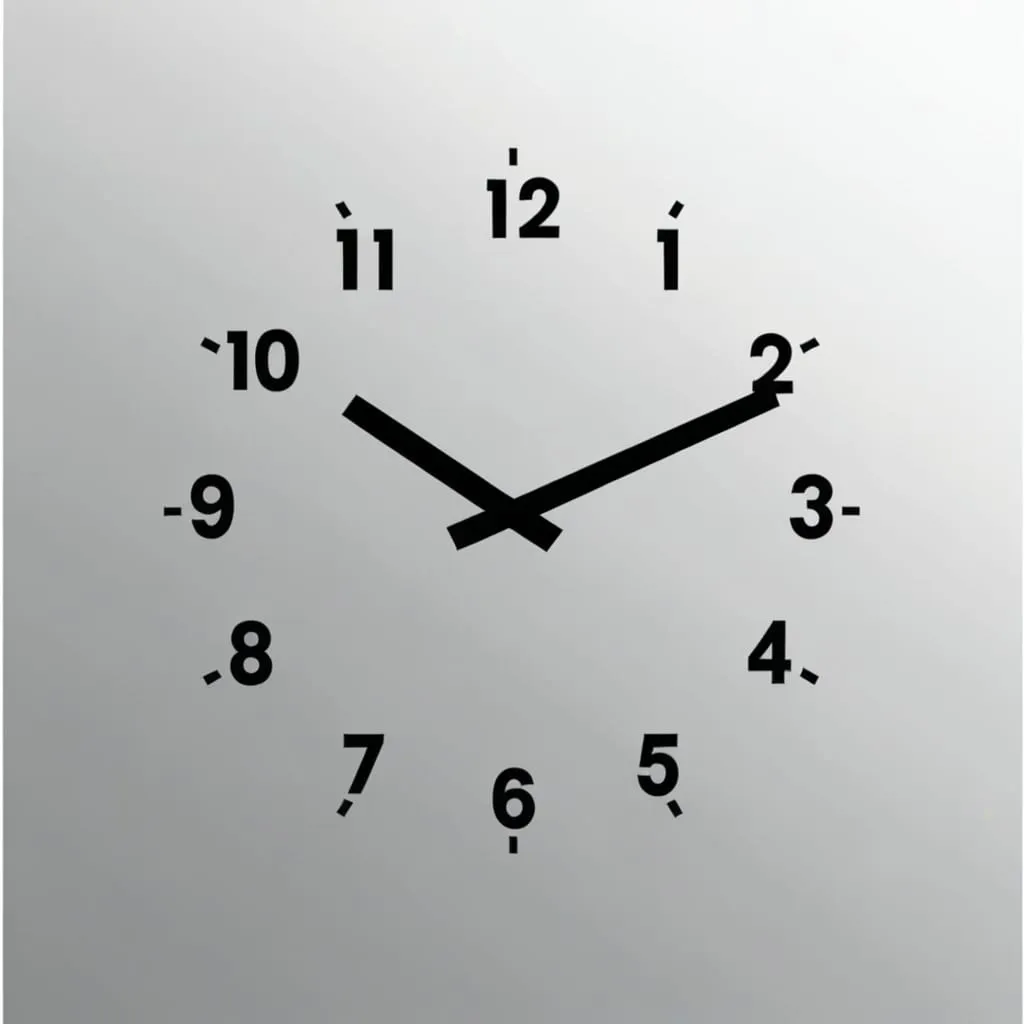The Reverse Calendar Method: A Game-Changer for Time Management
Ever felt like you're constantly racing against the clock, struggling to meet deadlines and juggle multiple tasks? Well, you're not alone. In today's fast-paced world, time management has become a crucial skill. But what if I told you there's a method that could revolutionize the way you plan and execute your tasks? Enter the Reverse Calendar Method.
This isn't just another trendy time management hack. It's a practical, effective approach that's gaining traction among professionals, students, and anyone looking to get a better handle on their schedule. So, what's all the fuss about?
Let's dive into the world of reverse planning and see how it can transform your productivity.
What Exactly is the Reverse Calendar Method?
Imagine starting a road trip by focusing on your destination first, then planning your route backward. That's essentially what the Reverse Calendar Method is all about. Instead of starting from today and working forward, you begin with your end goal and work backwards.
Here's the gist: You take your final deadline and break it down into smaller, manageable tasks, working your way back to the present. It's like creating a roadmap in reverse, ensuring you hit all the important milestones along the way.
Why Does It Work So Well?
You know that feeling when you're halfway through a project and suddenly realize you've underestimated the time needed? Yeah, we've all been there. The beauty of the Reverse Calendar Method is that it helps avoid that panic-inducing situation.
By starting at the end, you're forced to consider all the steps needed to reach your goal. This bird's-eye view helps you allocate time more realistically. You're less likely to fall into the trap of thinking, "Oh, I can do that in a day," when in reality, it might take a week.
Plus, it's a great way to tackle those big, scary projects that seem overwhelming at first glance. Breaking them down into bite-sized chunks makes them feel much more manageable. Suddenly, that mountain of work looks more like a series of small hills you can easily climb.
Making It Work for Unpredictable Schedules
Now, I know what you're thinking. "But my schedule is all over the place! How can I plan anything?" Well, that's where the Reverse Calendar Method really shines.
If you're someone with a schedule that changes faster than the weather, this method can be your secret weapon. Here's why: It encourages you to log your past activities. By keeping track of how long tasks actually took you in the past, you can make more accurate estimates for the future.
Let's say you're a freelancer juggling multiple clients. One week you might be swamped with work, the next you're twiddling your thumbs. By using reverse calendar blocking to log your time, you start to see patterns. Maybe that "quick" client call always turns into a two-hour brainstorming session. Or perhaps that report you thought would take a day actually takes three.
Armed with this knowledge, you can plan more realistically. It's like having a crystal ball, but instead of predicting the future, you're learning from your past.
Stress Less, Achieve More
Here's something we can all relate to: the stress of looming deadlines. It's like a dark cloud hanging over your head, right? Well, the Reverse Calendar Method is like a ray of sunshine breaking through those clouds.
By breaking down your projects into smaller tasks, you're not just organizing your time better. You're also giving yourself a series of small wins. Each completed task becomes a little victory, boosting your motivation and confidence.
Think about it. Which feels better: staring at a massive project with no idea where to start, or ticking off a series of manageable tasks, knowing each one brings you closer to your goal? It's like the difference between trying to eat an entire cake in one sitting and enjoying it slice by slice.
Plus, there's something incredibly satisfying about seeing your progress visually. Whether you're using a physical calendar, a spreadsheet, or a fancy app, watching those tasks get checked off one by one is surprisingly motivating. It's like having a cheerleader in your corner, constantly reminding you of how far you've come.
Putting It Into Practice
Alright, so you're sold on the idea. But how do you actually start using the Reverse Calendar Method? Don't worry, I've got you covered. Here's a simple guide to get you started:
- Start with the End in Mind: What's your ultimate goal? Whether it's launching a new product, writing a thesis, or planning a wedding, identify that final destination.
- Work Backwards: Now, think about all the steps you need to take to reach that goal. What needs to happen the day before your deadline? The week before? The month before?
- Break It Down: Take each of those steps and break them down into smaller, actionable tasks. The key here is to make each task specific and achievable.
- Set Realistic Deadlines: Assign deadlines to each task, working backwards from your final goal. Be honest with yourself about how long things take.
- Create a Visual Plan: Use whatever tools work for you - a physical calendar, a digital planner, or even a simple spreadsheet. The important thing is to have a visual representation of your plan.
- Stay Flexible: Life happens. Be prepared to adjust your plan as needed. The goal is progress, not perfection.
Real-Life Examples
Let's bring this to life with a couple of examples.
Imagine you're a student facing a "scary week" - you know, one of those weeks where it seems like every professor decided to schedule an assignment at the same time. Instead of panicking, you decide to use the Reverse Calendar Method.
You start by listing out all your deadlines. Let's say you have a research paper due on Friday, a presentation on Thursday, and a problem set due on Wednesday. Working backwards, you break each assignment into tasks. For the research paper, you might allocate Monday for research, Tuesday for outlining, Wednesday for writing the first draft, and Thursday for editing.
For the presentation, you could schedule time on Monday to create your slides, Tuesday to practice, and Wednesday for a final run-through. The problem set gets tackled over the weekend and finished up on Tuesday evening.
By breaking it down this way, you've turned a potentially overwhelming week into a series of manageable tasks. Plus, you've given yourself a clear roadmap to follow, reducing stress and increasing your chances of success.
Or let's say you're planning a product launch at work. Your launch date is three months away. Working backwards, you identify key milestones: finalizing the product design, developing marketing materials, setting up the sales pipeline, and planning the launch event.
Each of these milestones gets broken down further. For the product design, you might include tasks like conducting user testing, making design revisions, and getting final approval. Marketing tasks could include creating a content calendar, designing social media assets, and writing press releases.
By mapping it all out in reverse, you ensure that you're not leaving any crucial tasks to the last minute. You can see at a glance if you're on track or if you need to adjust your timeline.
The Power of Perspective
One of the most powerful aspects of the Reverse Calendar Method is the shift in perspective it provides. Instead of looking at a project as one massive, intimidating task, you see it as a series of manageable steps.
This change in viewpoint can be incredibly empowering. Suddenly, that impossible-seeming goal becomes achievable. It's like the difference between looking at a mountain from the bottom and seeing it as an insurmountable obstacle, versus having a map that shows you the path to the summit, complete with rest stops along the way.
This method also helps combat procrastination. When you have a clear plan laid out, with specific tasks assigned to specific days, it's harder to put things off. You know exactly what needs to be done and when, which can be a powerful motivator.
Adapting to Your Needs
The beauty of the Reverse Calendar Method is its flexibility. You can adapt it to suit your personal style and needs. Some people prefer to use digital tools, creating detailed spreadsheets or using project management software. Others might find a physical calendar or bullet journal more their style.
The key is to find what works for you. Maybe you like to color-code your tasks, or perhaps you prefer a minimalist approach. You might find it helpful to include rewards for completing major milestones, or you might be motivated simply by seeing your progress.
Remember, the goal is to make your life easier and your work more efficient. If a particular approach isn't working for you, don't be afraid to tweak it.
Overcoming Challenges
Of course, no method is without its challenges. One common hurdle with the Reverse Calendar Method is the temptation to over-plan. It's easy to get caught up in breaking tasks down into smaller and smaller pieces, to the point where you spend more time planning than doing.
The key is to find a balance. Break tasks down enough to make them manageable, but not so much that you lose sight of the bigger picture. Remember, the plan is a tool to help you achieve your goal, not an end in itself.
Another challenge can be dealing with unexpected setbacks. Life has a way of throwing curveballs, and even the best-laid plans can go awry. This is where flexibility comes in. Your reverse calendar should be a guide, not a straitjacket. Be prepared to adjust and adapt as needed.
The Long-Term Benefits
As you start using the Reverse Calendar Method, you'll likely notice some immediate benefits - less stress, better time management, and a clearer sense of direction. But the real magic happens over time.
As you continue to use this method, you'll get better at estimating how long tasks take. You'll develop a more realistic sense of what you can accomplish in a given timeframe. This improved self-awareness can be invaluable in both your personal and professional life.
You might also find that this method helps you prioritize more effectively. When you're looking at your goals from a big-picture perspective, it becomes easier to identify what's truly important and what can be delegated or eliminated.
Over time, the Reverse Calendar Method can help you develop a more proactive approach to your work and life. Instead of constantly reacting to deadlines and putting out fires, you're planning ahead and staying ahead of the curve.
Wrapping It Up
The Reverse Calendar Method isn't just about managing your time better. It's about taking control of your life and your goals. It's a way to turn those big, scary projects into achievable steps. It's a tool for reducing stress, increasing productivity, and ultimately, helping you achieve more of what matters to you.
So why not give it a try? Start with a small project or goal, and see how it works for you. You might just find that working backwards is the key to moving forward in your life and career.
Remember, the journey of a thousand miles begins with a single step - or in this case, with the end in mind. Happy planning!






